A History of the County of Buckingham: Volume 3. Originally published by Victoria County History, London, 1925.
This free content was digitised by double rekeying. All rights reserved.
'Parishes: Wooburn', in A History of the County of Buckingham: Volume 3, ed. William Page (London, 1925), British History Online https://prod.british-history.ac.uk/vch/bucks/vol3/pp105-112 [accessed 23 April 2025].
'Parishes: Wooburn', in A History of the County of Buckingham: Volume 3. Edited by William Page (London, 1925), British History Online, accessed April 23, 2025, https://prod.british-history.ac.uk/vch/bucks/vol3/pp105-112.
"Parishes: Wooburn". A History of the County of Buckingham: Volume 3. Ed. William Page (London, 1925), British History Online. Web. 23 April 2025. https://prod.british-history.ac.uk/vch/bucks/vol3/pp105-112.
In this section
WOOBURN
Waborne (xi cent.); Woodbourne (xvii cent.).
Wooburn is watered by the River Wye, called also the Wickham River, which flows through it from Wycombe and enters the Thames at Bourne End. The area is 3,140 acres, comprising 1,436 of arable land, 699 of permanent grass, 289 of woods and plantations (fn. 1) and 21 acres covered by water, and includes the hamlets of Bourne End, Spring Gardens, Havenslea, The Chequers, North End Woods and Wooburn Common. It is low-lying, the surface of the land varying between 92 ft. above the ordnance datum in the south-west of the parish near the Thames and 367 ft. on the road to the south-west of Juniper Hill. The soil is loam and gravel, the subsoil chalk and sand. A large proportion of the inhabitants find employment at the Soho paper and millboard mills, for which this parish has long been famous, others at the Clapton Mill, worked by Messrs. Wainwright & Co., cabinet-makers, and at the Royal Stag Brewery of Messrs. Williams & Co. Lace was formerly made here, and a woman who made the lace for Princess Charlotte's wedding dress was still living in 1870. (fn. 2) The Thames is spanned by a railway bridge and by a toll bridge for the road from Bourne End to Cookham in Berkshire.
The village, locally called 'the town,' is situated towards the south of the parish. On approaching it by the road from the south-west the Town Farm, vicarage and numerous cottages are on the right; the Soho paper-mills, the school, the church and the brewery are on the left. At Deyncourt Farm, which also lies on the left of the village, four cottages and some outbuildings incorporate remains of the 15th-century manor-house of the Deyncourt and Lovel families. The cottages are built partly of flint and clunch in chequer pattern and partly of brick and timber, with tiled roofs. The three western cottages are supposed to have been the chapel, while the present stables and hay-loft formed the old hall, which still retains its original fine open timber roof. In its south wall are two interesting 16th-century oriel windows of four lights, now blocked, and traces of two others. The north wall was rebuilt in brick and bears the date 1610. Adjoining is a large 14th-century barn of timber and brick. The Royal Oak Inn, now a private dwelling-house, has two 17th-century carved wooden figures fixed to the front; one holds a compass and rule and the other a staff. They are said to have come from the church and to represent the architect and builder. Behind the inn is a 16th-century barn.
About half a mile to the north-west there is a second village, distinguished as Wooburn Green. The houses and cottages, some of which, including the Bull Inn and Red Cow Inn, are of the 17th century, are grouped round a triangular green of about 1½ acres, sheltered on all sides by hills. On the right of the road leading north-west there are brick-works and a gravel-pit. Near the station on the Wycombe, Thame and Oxford branch of the Great Western railway there is a chalk quarry. The Baptists, Wesleyans and Primitive Methodists each have a chapel at Wooburn Green. The manorhouse of that part of Wooburn afterwards known as Bishop's Wooburn became a favourite residence of the Bishops of Lincoln during the 16th century. Bishop Atwater died there in 1521 (fn. 3) and Bishop Longland, confessor to Henry VIII, in 1547. (fn. 4) It was afterwards the seat of the Goodwins and the Whartons. Philip, 'the good Lord Wharton,' friend of Puritan divines, notably of John Owen, (fn. 5) entertained William III at Wooburn soon after his accession. (fn. 6) His grandson Philip, created Duke of Wharton in 1718, (fn. 7) lived there for a while in great magnificence, and he and his father are said to have spent £100,000 on the improvement of the house and grounds. (fn. 8) Traces of the terraces which they cut in the hill are still visible. The old palace was surrounded by a moat, the greater part of which remains together with the fish-pond. It covered a large area, and its gallery, 120 ft. in length, contained the valuable collection of portraits of the Wharton family, which were purchased by Sir Robert Walpole (fn. 9) and later transferred to the Imperial collection at St. Petersburg. (fn. 10) The palace, with the adjoining cruciform chapel, was taken down in 1750, (fn. 11) with the exception of one of the stable wings, which was converted into a dwelling-house (fn. 12) and new-fronted by Mr. Bertie in 1769, (fn. 13) and has since been enlarged. Known as Wooburn House, (fn. 14) it is a large brick mansion, and was the residence of Sir Giffen Wilson for about twenty years before his death in 1848, (fn. 15) and afterwards the seat of Mr. Alfred Gilbey; it is at present unoccupied. It stands to the southwest of Wooburn Green, and is sheltered from the high road by a row of Lombardy poplars planted in 1777. The entrance lodge is ancient. To the southeast of the grounds of Wooburn House is Burghers or Beggars Hill, with a school and chapel, and beyond in the same direction lies Wooburn Common. Northeast of the Compasses Inn is an old gravel-pit, and beyond Blake's Wood (fn. 16) to the north-east is Lillifee Farm, to which reference has been made under Hedsor. Over's Farm, to the north of Lillifee, on the Beaconsfield border, probably derives its name from Richard Over, who purchased some land called Lynchwell in this parish in the middle 16th century. (fn. 17) To the north-west of it is an old gravel-pit, and another to the south-west. To the west of these farms stretches Mill Wood. Nearly half a mile to the north-east of it is Holtspur Farm, with a gravelpit to the west of it and brick-works and old gravelpits to the east. Upper Holtspur Farm lies to the north-west, and from it the road leads down-hill to Holtspur Bottom, where there is a chalk quarry. Lude Farm, an old manor-farm, is in the extreme north of the parish. About half-way between it and Wooburn Green is the hamlet of Wooburn Moor, with Clapton Mill to the north-west and Glory Mill, occupied as paper-mills by Messrs. Wiggins, Teape & Co., to the south-east, with Lower Glory Mill, worked by the Buckinghamshire Fibre Board Co., less than half a mile distant. Glory, or The Glory, gave its name to a family who lived there in the 12th and 13th centuries, and survives also in Glory Hill and Glory Hill Farm, not half a mile east of Glory Mill.
Bourne End, in the south-west of Wooburn parish, known in 1222 as the Burn End, (fn. 18) is mentioned as part of the manor of Wooburn Deyncourt in 1496. (fn. 19) It is a residential district by the River Thames. Abney House at Bourne End, formerly the residence of the late Gen. Hammersley, is well known to boating men, as is also Fieldhead, the residence of Mr. Rudolph C. Lehmann. Here is a station on the Wycombe, Thame and Oxford branch of the Great Western railway, which crosses the river at this point. From Bourne End railway bridge there are beautiful views of Cliveden Woods and Hedsor. In dredging near this bridge a dug-out flat-bottomed boat of oak, probably of the Bronze Age, was found and given to the late Frank Buckland for his collection at South Kensington Museum. (fn. 20)
Other hamlets are Cores End, to the south-west of Wooburn village, with a farm and a Congregational chapel (memorable for its connexion with Thomas Groves), (fn. 21) and Egham's Green, where there is a gunpowder mill. Prince's Mill stands between the two hamlets.
This parish was inclosed in 1802, when an allotment was made to the poor for fuel. (fn. 22)
The following place-names occur: Ovepetur or the Monte Quay (fn. 23) (xv cent.); Cattesbrayne Piece, (fn. 24) Clement's Close, (fn. 25) Court Close, Fuller's Toft, (fn. 26) Grangefield (fn. 27) and a capital messuage Myelsies or Milsies (fn. 28) (xvii cent.); Beggars Hill, Blake's Wood, Niplands (where there was a kiln for bricks and tiles) and Old Ross Wood (fn. 29) (xviii cent.); Chapel Grove, Coles Croft, Great and Little Colts Crofts, Jays Croft Wood, Jenkin's or Sinkin's Field and Wood, Great and Little Mound, (fn. 30) Watry Lane (fn. 31) (xix cent.).
MANORS
WOOBURN MANOR
WOOBURN MANOR, which had formed part of Harold's lands, (fn. 32) was assessed in 1086 at 8½ hides, when it was held by Remigius Bishop of Lincoln. (fn. 33) In 1284 it was held by the Bishop of Lincoln of the king in chief for three knights' fees. (fn. 34) The overlordship rights appertained to the see of Lincoln. (fn. 35) These rights over two-thirds of the manor appear to have been retained by the Crown after the attainder of Francis Lord Lovel in 1486, (fn. 36) and fresh grants were made in fee in 1488 (fn. 37) and 1513. (fn. 38) The see of Lincoln surrendered all rights in the remaining onethird of Wooburn in 1547, (fn. 39) and a fresh grant in fee was made by the Crown in 1550. (fn. 40) The tenure by knights' service in connexion with Wooburn is last named in 1627. (fn. 41)
In 1086 the tenant of Bishop Remigius in Wooburn was Walter (fn. 42) Deyncourt (de Aincurt, d'Eyncourt), a kinsman, who was also connected by marriage with the Conqueror. (fn. 43) He held lordships in several counties, principally in Nottinghamshire, (fn. 44) Lincolnshire (fn. 45) and Derbyshire. (fn. 46) His heir was his younger son Ralph, (fn. 47) founder of Thurgarton Priory in Nottinghamshire. (fn. 48) Ralph's son and successor Walter Deyncourt (fn. 49) was one of the benefactors of Kirkstead Abbey, Lincolnshire. (fn. 50) One of his grants to this abbey is dated 1140, and was given with the consent of his sons Oliver and John. (fn. 51) The latter, who succeeded his father, (fn. 52) also granted lands to Kirkstead Abbey in 1162. (fn. 53) His son Oliver, (fn. 54) representative of the family in 1186, (fn. 55) died in 1201, (fn. 56) when the wardship of his sons and the custody of the lands and the marriage of the heir Oliver were granted to John Bishop of Norwich. (fn. 57) Oliver Deyncourt paid £100 relief to the king on the lands of his inheritance in 1217. (fn. 58) Hugh Bishop of Lincoln brought suits against him in 1220 (fn. 59) and 1221 in respect of his tenure of Wooburn Manor. (fn. 60) A settlement was made in 1222 by which the bishop granted Oliver and his heirs two-thirds of the manor to hold for the service of two knights' fees. (fn. 61) He was still holding these two parts of Wooburn in 1235. (fn. 62) They are later called WOOBURN MANOR or (from the first quarter of the 15th century) WOOBURN DEYNCOURT or DEANCOURT MANOR.
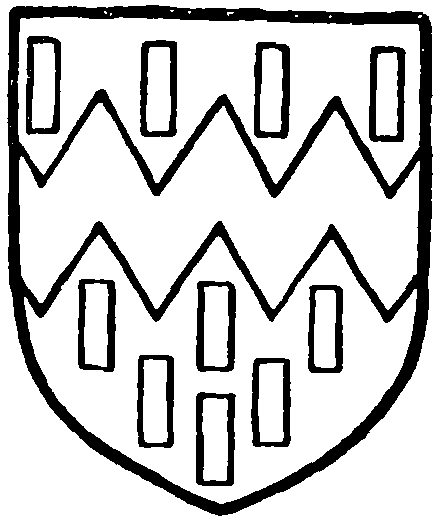
Deyncourt. Azure billety and a fesse dancetty or.
Oliver Deyncourt's son and heir John obtained the livery of his lands in 1246. (fn. 63) The custody of his lands and heirs was granted to Queen Eleanor in 1257, (fn. 64) and she was still in possession in 1270. (fn. 65) Edmund son of John Deyncourt had attained his majority in 1277, (fn. 66) and was summoned to Parliament as a baron by the title of Lord Deyncourt in 1299. (fn. 67) In 1314, having only a female heir, Isabel, he obtained a royal licence to settle his estates after his death for the preservation of his name and arms on William and John Deyncourt respectively in tail-male. (fn. 68) They were the sons of John Deyncourt of Parkhall, Derbyshire, representing a collateral branch of the family. (fn. 69) Edmund Deyncourt died about 1327 and was succeeded by his kinsman William, (fn. 70) first in the reversion, who was summoned to Parliament in 1332 as Lord Deyncourt. (fn. 71) In 1353 he granted his Wooburn manor for eleven years to Thomas de Holborn and Richard de Granby as security for a debt of £400. (fn. 72) With his other manors it was exempted from official exactions in 1359, since he was charged with the custody of the King of France and his suite at Somerton Castle. (fn. 73) He died in 1364 seised of this manor jointly with his wife Millicent, (fn. 74) to whom it was delivered in the same year. (fn. 75) On her death in 1379 she was succeeded by her grandson William son of William Deyncourt, (fn. 76) who had predeceased his father. (fn. 77) He died in 1382 (fn. 78) and his son Ralph in infancy two years later. (fn. 79) Another son, John, aged twenty in 1402, was heir to his brother Ralph. (fn. 80) He died in 1406 (fn. 81) and his son and heir William, still a minor, in 1422. (fn. 82) The heirs of William Deyncourt in respect of Wooburn were his sisters Alice and Margaret. (fn. 83) The latter married Sir Ralph Cromwell, and in 1435 her moiety of Wooburn Deyncourt, twice called CRANWELL MANOR at the end of the 16th century, (fn. 84) was settled on them, with remainder in default of issue to the right heirs of Margaret. (fn. 85) She died in widowhood without children in 1454, when her heir was her sister Alice wife of Sir William Lovel, (fn. 86) seventh Lord Lovel of Tichmersh, who thus became sole heir of her parents and suo jure Baroness Deyncourt. (fn. 87) Sir William Lovel died in 1455 (fn. 88) and his widow, who afterwards married Sir Ralph Butler, (fn. 89) in 1474, when her heir was her grandson Francis (fn. 90) ninth Lord Lovel. (fn. 91) Lord Lovel was created Viscount Lovel in 1483, supported Richard III, and was attainted after Bosworth Field in 1485. (fn. 92) In the following year Wooburn Deyncourt was held for a short time by Jasper Duke of Bedford (fn. 93) and afterwards by Sir John Risley, kt. (fn. 94) He obtained a grant of the manor in tail-male in 1488, (fn. 95) but died without male issue in 1512. (fn. 96) In the following year Wooburn Deyncourt was granted in fee to William afterwards Sir William Compton, kt. (fn. 97) His grandson Henry Compton, knighted in 1566 and summoned to Parliament as Lord Compton in 1572, (fn. 98) died seised in 1589. (fn. 99) His son and heir William Lord Compton, (fn. 100) ancestor of the Earls of Northampton, (fn. 101) effected certain exchanges with the Crown in 1596 by which he obtained the reversions and remainders (fn. 102) and a grant of Deyncourt Manor in fee simple. (fn. 103) In the following year he quitclaimed it to Francis afterwards Sir Francis Goodwin, kt. (fn. 104) The descent of this manor is the same as that of Upper Winchendon (fn. 105) until 1732, (fn. 106) when it was sold by the trustees of Philip Duke of Wharton to John Morse. (fn. 107) He died in 1739, (fn. 108) when his heir was his niece Elizabeth, the last representative of her family and the wife of Peregrine Bertie. (fn. 109) She died in 1765 (fn. 110) and her husband in 1777. (fn. 111) Their son Peregrine, who had barred the entail on the estate in 1765, (fn. 112) was buried at Wooburn in 1782. (fn. 113) His brother and heir, Col. Albemarle Bertie, in 1784 sold the whole manor of Wooburn, including Wooburn Deyncourt, to Mrs. (Rebecca) Du Pre. (fn. 114) Her son James, on succeeding his mother in 1800, (fn. 115) made his title secure in law, (fn. 116) and was owner of Wooburn Deyncourt and of all manors in Wooburn in 1802. (fn. 117) His great-grandson, William Baring Du Pre (fn. 118) of Taplow House, is the present propriteor.
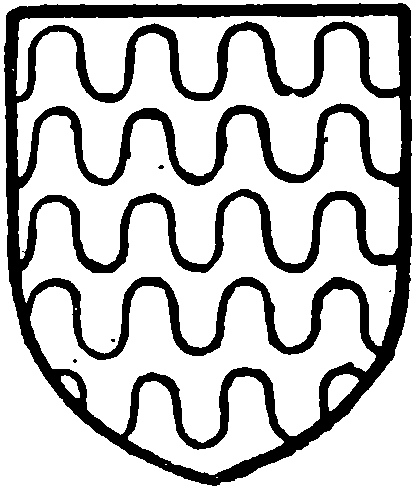
Lovel of Tichmersh. Barry wavy or and gules.
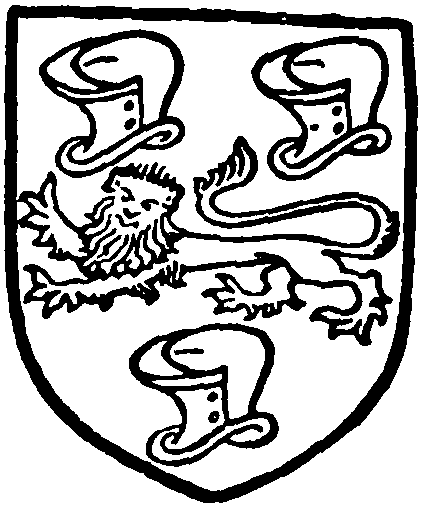
Compton. Sable a leopard or between three helms argent.
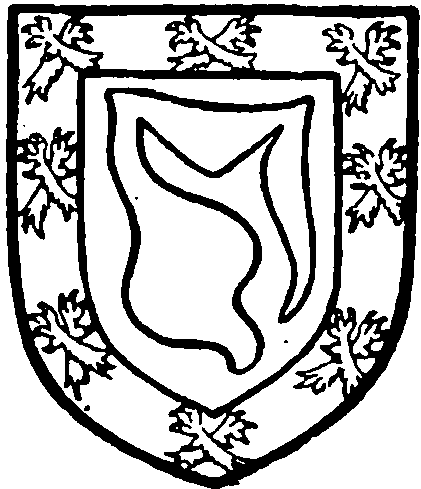
Wharton. Sable a sleeve argent and a border or charged with eight pairs of lions' paws razed gules set saltirewise.
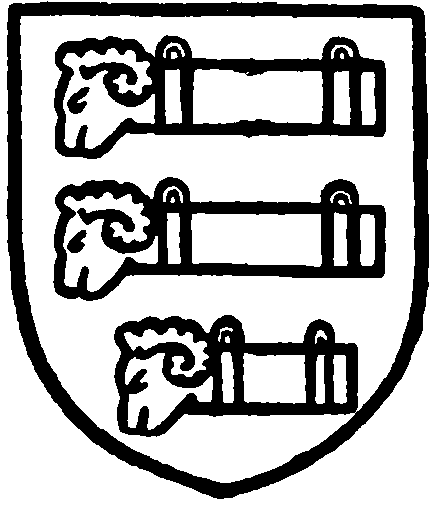
Bertie. Argent three battering rams sable with heads and rings azure.
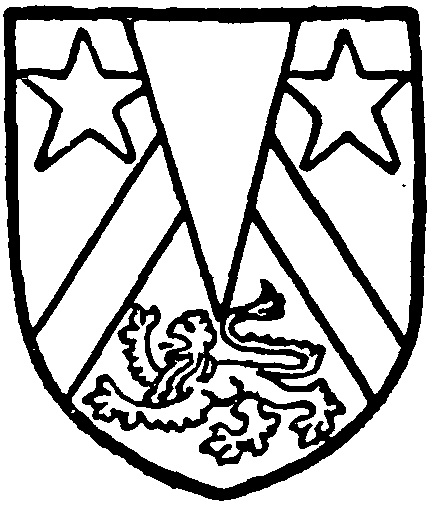
Du Pre. Azure a cheveron or between two molets in the chief and a lion passant in the foot argent with a pile or over all.
The reversions and remainders of this manor acquired by William Lord Compton in 1596 were granted in fee on his petition in 1597 to Thomas Spencer and Robert Atkinson. (fn. 119) In the same year Lord Compton conveyed an estate in Wooburn Deyncourt to Ralph Atkinson. (fn. 120) This included the mansion-house or farm and Wooburn Mill, of which the latter died seised in fee in 1626. (fn. 121) His son and heir Ralph owned this property in 1634, (fn. 122) but no later reference to his family in connexion with Wooburn has been found. Before 1765 the manor-house estate had passed to the owners of the manor. (fn. 123)
The ordinary manorial court was held at Wooburn Deyncourt (fn. 124) every three weeks. (fn. 125) The right of holding the view of frankpledge twice yearly after Easter and Michaelmas, also free warren, the amendment of the assize of bread and ale, pillory and tumbril, waifs and strays were granted to Alice Lady Lovel and Deyncourt in 1459. (fn. 126) The courts leet and baron are named in 1765 (fn. 127) and the view of frankpledge in 1784. (fn. 128) Freedom of access to the wharf on the Thames belonging to this manor, with exemption from all tolls and customs payable to the Crown on goods landed there or conveyed thence and from obligatory conveyance of goods for the king's use, was assured in 1459. (fn. 129) In this year the right to hold a yearly fair on her manor on the feast of the Translation of King Edward and two following days (20, 21, 22 June) was also granted to Lady Lovel. (fn. 130) This fair had been discontinued at the end of the 18th century. (fn. 131) A grant of two fairs was made to Philip Lord Wharton in 1687, one to take place on the feast of St. George and the day following (23, 24 April), the other on All Saints' Day and the next day (1, 2 November). (fn. 132) In 1784 the rights belonging to these fairs were leased to Thomas Williams for £4 yearly. (fn. 133) They are still held for cattle on Wooburn Green, but owing to the alteration in the calendar, on 4 May and 12 November.
Eight mills valued at 104s. yearly stood on Wooburn Manor in 1086. (fn. 134) Oliver Deyncourt held at least four of them in the first half of the 13th century. (fn. 135) The water corn-mill, worth 20s. yearly in 1422, (fn. 136) and other mills with their tenants and rentals are named in the transfer of the Bertie estate to Mrs. Du Pre in 1784. (fn. 137)
A fishery of 300 eels appertained to Wooburn Manor in 1086. (fn. 138) In 1382 a fishery called Wooburn Lock belonged to Wooburn Deyncourt. (fn. 139) By 1422 it had fallen into disrepair. (fn. 140) The manorial rights included free fishery in the water of Wooburn (fn. 141) (that is the Wye) and in the Thames. (fn. 142)
Shire-silver was paid by Wooburn Deyncourt Manor in the 14th and 15th centuries. (fn. 143) Reference to a park of Wooburn Deyncourt occurs in the middle 16th century. (fn. 144)
The one-third of Wooburn Manor or 10 librates of land retained by the see of Lincoln in 1222 was called BISHOPS WOOBURN. It was held by the rector of Wooburn, William of Thornton, (fn. 145) in 1285, (fn. 146) and taken into the king's hands during the unsettled times of Edward II, who restored it to the see of Lincoln in 1324. (fn. 147) To escape the inconvenience caused by this liability of the temporalities of his see to seizure the diocesan is said to have appropriated Wooburn Rectory (fn. 148) about 1330. (fn. 149) Wooburn Manor, practically a rectory manor, remained with the see of Lincoln until 1547, when it was alienated, with the consent of the dean and chapter, by Bishop Holbeche to Edward Duke of Somerset. (fn. 150) His interest in Bishops Wooburn was conveyed to Francis Russell Earl of Bedford, (fn. 151) who obtained a grant in fee from the Crown in 1550, with all appurtenant liberties, including the view of frankpledge and free warren. (fn. 152) He alienated this manor in 1562 to John Goodwin, (fn. 153) who in the same year was elected Sheriff of Bedfordshire and Buckinghamshire. (fn. 154) He was afterwards knighted and appointed Sheriff of Buckinghamshire in 1587. (fn. 155) In the previous year Sir John Goodwin and his son and heir-apparent Francis had alienated Bishops Wooburn to Edward Lord Zouche and others. (fn. 156) This appears to have been only a temporary arrangement. Sir John Goodwin died in 1597, (fn. 157) and in 1600 his widow Elizabeth, (fn. 158) then the wife of Thomas Stukley, quitclaimed her right in this manor to Francis Goodwin. (fn. 159) He leased it in the same year for forty-five years to Edward Phillipps and others. (fn. 160) From 1600 the descent of the manor of Bishops Wooburn is the same as that of Wooburn Deyncourt (q.v.). The distinctive names of these manors, which are still found in 1802, (fn. 161) were already being lost, and the estate, which changed hands in 1784, was then described as the manor of Wooburn alias Bishops Wooburn alias Wooburn Deyncourt, (fn. 162) and is now only known as Wooburn Manor.
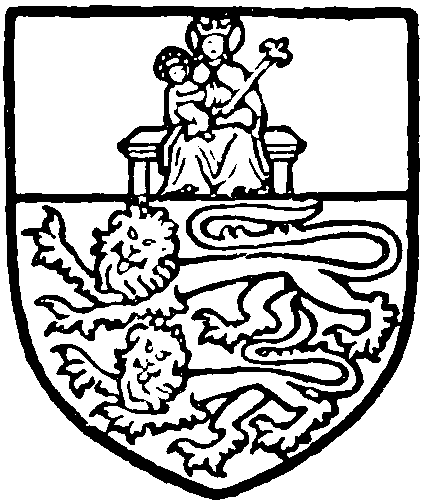
Bishopric of Lincoln. Gules two leopards or and a chief azure with Our Lady and the Child or therein.
Before the Conquest Leuric, one of Earl Harold's men, held LEDE MANOR. (fn. 163) In 1086 it was held by the Bishop of Lincoln and assessed at 1½ hides. (fn. 164) It corresponds to half a knight's fee of the two fees held in Wooburn by Oliver Deyncourt in 1235 (fn. 165) and to the estate known as LYDE alias LUDE MANOR from the later 17th century.
The bishop's tenant in Lede in 1086, as in Wooburn, was Walter (fn. 166) [Deyncourt], but by the middle of the 13th century the Deyncourts had subinfeudated Reynold de la Lude and Richard de la Stoke. (fn. 167) Their holdings cannot be clearly traced. About 1224 Ada de la Stoke held one-sixth of a knight's fee in Wooburn of Oliver Deyncourt, (fn. 168) who ten years later claimed the custody of her son and heir John against Robert Marshal and his wife Lettice. (fn. 169) About 1270 John de la Stoke died seised of 2 virgates of land in Wooburn, the custody of which was given to Thomas de Missenden as next of kin to the heir. (fn. 170) No later connexion of this family with Wooburn has been found.
Ada de la Stoke had granted her holding to Walter de la Lude and his three brothers some ten years before her death. (fn. 171) Reynold de la Lude was probably one of these. In 1233 Richard de la Lude made an agreement with Iseult daughter of Gilbert of Lewknor and widow of William de la Stoke concerning half a hide of land in Wooburn, by which Richard granted half the land with the capital messuage to Iseult for life with one-third of her husband's estate, which Richard was then holding. (fn. 172) In 1245 William de la Lude granted to Isabel widow of William de la Lude one-third of a carucate of land in Wooburn for her life in dower. (fn. 173) The last representative of this family was John de la Lude, who recovered seisin of land in Wooburn and the neighbourhood from Ralph Loveday of Hedsor in 1315. (fn. 174) He and his wife Alice made some agreement in regard to property in Wooburn in 1328 with Richard de Wegenholt and his wife Isabel. (fn. 175) John de la Lude was at one time coroner for Buckinghamshire, but was removed by the king in 1330 for inefficiency. (fn. 176) He was still alive in 1337 and in debt to Richard de Wegenholt. (fn. 177)
When Lede reappears as Lyde or Lude Manor in 1680 it was conveyed by Thomas Morris and Francis Smith to William Dayrell. (fn. 178) He and his wife Elizabeth quitclaimed this manor in 1694 to John Long. (fn. 179) A member of his family bearing the same name still owned it in 1736. (fn. 180) Fifty years later it was sold by Samuel Rotton and his wife Sarah to Mrs. Du Pre, (fn. 181) owner of the other manors in Wooburn (q.v.), and it has since followed the same descent.
In 1235 John de la Gloria held half a fee in Wooburn of Oliver Deyncourt (fn. 182) which appears from the early 15th century as THE GLORY MANOR or THE GLORY or GLORY MILLS, a sub-manor to that of Wooburn Deyncourt. (fn. 183) An agreement was made in 1256 by which Isabel and Alice de la Gloria were to hold in survivorship a messuage, a carucate of land and three mills in Wooburn of Isabel de Worcester and her daughter Agnes with remainder to Isabel and Agnes. (fn. 184) This appears to be the estate held in 1278 by Walter de Amersham and granted by him for life to Agnes daughter of Walter de Grey with remainder to her son John and final remainder to Walter and his heirs. (fn. 185) He was granted free warren in his lands in Wooburn in 1282 (fn. 186) and in 1301 transferred them to his son Adam de Wooburn (see Amersham) and his heirs with successive remainders to John and Thomas, Adam's brothers, and their heirs and reversion in default of direct issue to Walter and his heirs to hold of the chief lord of the fee for the accustomed services, giving Walter for his life £10 yearly and after his death a rose at Midsummer to his heirs. (fn. 187) Adam de Wooburn, or as he is more usually called Adam de la Gloria, and his wife Margaret made an agreement with Edmund Deyncourt in respect of their holding in 1314 (fn. 188) and were both living in 1318. (fn. 189) Adam de la Gloria and his wife Joan were holding in 1339 (fn. 190) and a reference to John de la Gloria occurs in 1364. (fn. 191) In 1404 Roger Dayrell of Lillingstone Dayrell recovered seisin of Glory Manor from Walter Bounce, to whom he had leased it. (fn. 192) In 1414 Roger's widow, Margaret Dayrell, sold it to Walter de Asselyn and his wife Alice with remainder to the heirs of Alice. (fn. 193) Later in the century this manor had reverted to the Amershams of Tomlyns and followed the same descent as that manor in Amersham (fn. 194) (q.v.) until the early 17th century. It was included by Sir Francis Goodwin in the marriage settlement on his son Arthur in 1618, (fn. 195) and has since followed the same descent as Wooburn Deyncourt (q.v.).
In 1627 Richard King and Christopher Fisher were seised in fee of the Glory paper-mills and leased them to Edmund Waller of Beaconsfield at a peppercorn rent for twenty-two years. (fn. 196) He relet them to Richard King for £50 yearly until 1645, when payments were in arrears. (fn. 197) In 1751 the Glory Mill was transferred from Gilbert and Susan Beck and others to Sarah Peltzer and others. (fn. 198)
Half the remaining fee of the Deyncourts in Wooburn was held in 1235 by William Fisher, John of Elmeden, Thomas of Stanbrook and the other half by the heirs of Ralph of Medburn, (fn. 199) but no later trace of these holdings has been found.
The 16th-century so-called GOODWIN'S MANOR in Wooburn corresponds to four messuages, seven cottages and 200 acres of land held of Wooburn Deyncourt Manor for fealty and 18s. 8d. yearly by John Goodwin (fn. 200) at his death in 1488. (fn. 201) Before 1493 his son and heir John, (fn. 202) grandfather of Sir Francis Goodwin (fn. 203) (Wooburn Deyncourt, q.v.), sued Thomas Restwold and Thomas Garston, feoffees to uses under his father's will in respect of this property. (fn. 204) He inclosed land for pasture in Wooburn in 1507 (fn. 205) and earlier and died about 1558. (fn. 206) Goodwin's Manor remained in the Goodwin family, (fn. 207) but is not distinguishable after 1600 from Wooburn Deyncourt.
CHURCHES
The church of ST. PAUL consists of a chancel 29 ft. 6 in. by 14 ft. 6 in., north chapel 30 ft. by 14 ft., nave 52 ft. by 19 ft. 6 in., north aisle 10 ft. wide, south aisle 12 ft. 6 in. wide, and a west tower 14 ft. square. These dimensions are all internal.
The earliest portion of the present building is the nave, which dates from about 1180; the chancel seems to have been rebuilt in the 14th century, when the north chapel was added, and the aisles were rebuilt in the 19th century. The west tower was added in 1442, (fn. 208) and the whole fabric having become very dilapidated was thoroughly restored internally in 1856–7 and externally in 1868–9. The walls have been refaced with modern flint-work and have stone dressings; the north chapel roof is tiled, but the other roofs are covered with lead.
The three-light east window of the chancel is entirely modern with the possible exception of part of the moulded rear arch. On the north are a rectangular rebated locker and a 14th-century arch to the chapel of two moulded orders springing from semi-octagonal jambs with moulded capitals and bases. The south wall has two modern windows, beneath the easternmost of which is a small plain recess with a pointed head covered with plaster. At the southeast of the chancel is a 14th-century piscina with a trefoiled head, a circular bowl and a stone shelf. The chancel arch is modern. The north chapel is lighted on the north by two windows, each of two trefoiled ogee lights with head tracery, and on the east by a window of similar character but of three lights; all are of 14th-century date, but have been restored with cement. There is a modern doorway on the north and in the south wall is a 14th-century piscina. The pointed arch of two moulded orders opening into the north aisle is also of 14th-century date.
The nave was very considerably restored in 1856, when the clearstory was added. On the north and south are arcades of four bays with plain pointed arches, now plastered, supported on circular pillars with moulded capitals and bases; these date in part from the late 12th century, but the north arcade has been considerably retooled and restored, and the only original parts of the south arcade are the westernmost pillar and the west respond. The north and south aisles are both modern. (fn. 209)
The west tower is of three stages with an embattled parapet and has a stair-turret at the southeast angle. The moulded tower arch springs from responds with moulded capitals and bases. There is a small doorway in the south wall, giving access to the stair-turret. The doorway in the west wall with the window above it and the windows in the belfry are all modern, but the west doorway and the doorways opening from the ground stage and ringing chamber to the stair-turret all retain old doors.
The font is modern. There is said to have been an ancient curiously carved font in the church which had disappeared long before 1870. (fn. 210) There is a brass in the chancel to Thomas Swayn, S.T.B., who was prebendary of Aylesbury and chaplain to William Atwater, Bishop of Lincoln, and who died in 1519. It represents a priest in cope and amice and has a Latin inscription. Another with no date, but of the 16th century, has the figure of a man in a shroud with a scroll, an inscription in English verse, four shields, and a representation of the Trinity. The third brass in the chancel is to Arthur, the infant son of Philip Lord Wharton, who died in 1641; it consists of a small square plate with the figure of a child on an altar tomb, an inscription, and a lozenge with a shield of arms and a motto. The original slab of this brass is now in the south aisle; it is broken, but contains part of a marginal inscription and indents for all the above plates. The brasses in the north aisle include one to Christopher Askowe, Margery his wife, and William her son, with figures of the man and woman, the indent of a child, and an inscription, undated, but probably of the early 16th century; to John Goodwin, 1488, and Parnel his wife, 'first founders of the Stepull of Obourne Deyncourt,' with the figure of a civilian and indents of the figures of the woman and two children; and a third with an inscription to Hugh Robertson, a former vicar, who died in 1614. In the north chapel is an undated brass, probably of the late 15th century, with an inscription in Latin to Maud and Margaret, the wives of Thomas Sothewyk. On the north side of the chancel there is a mural tablet with arms and an inscription to Philip Lord Wharton, who died in 1695, and his two wives Elizabeth and Anne.
In the north chapel are a plain chest of the late 13th century with richly carved feet, another and smaller chest of the 17th century, and a table probably also of the 17th century.
The carved chancel screen from the design of Mr. Comper was given by Miss Du Pre and Mrs. Bagnell in memory of their father Caledon George Du Pre in 1900. The carved reredos representing the Entombment was presented by Mr. and the Misses Gilbey in 1901.
There is a ring of eight bells: the treble and second, 1814, and fourth, 1813, by Thomas Mears, jun.; the third, 1718, by Richard Phelps; the fifth, 1790, by John Warner; the sixth, 1868, by J. Murphy; the seventh, 1712, by Richard Phelps; the tenor, 1762, by Lester & Pack.
The plate consists of a silver flagon of 1704, a paten with fluted cover of 1708, a chalice of 1808 and a 19th-century paten.
The registers begin in 1653.
The church of ST. MARK, Bourne End, built in 1889, is designed in the style of the 13th century and consists of chancel, nave, south porch and turret containing one bell. It serves as a chapel of ease to the parish church.
There is a small mission church in Wycombe Lane dedicated to the honour of St. Mary.
ADVOWSON
In 1229 15 marks were paid annually from Wooburn Church (which was valued at £10 13s. 4d. in 1291) (fn. 211) to the see of Lincoln. (fn. 212) The vicarage was ordained in 1337 (fn. 213) and further endowed in 1458. (fn. 214) The advowson was retained by the Bishops of Lincoln (fn. 215) until 1547 and followed the same descent as Bishops Wooburn Manor (fn. 216) (q.v.) until 1912, when Mr. W. Baring Du Pre surrendered it to the Bishop of Oxford in consideration of a benefaction of £2,000 by Mrs. Gilbey towards the increase of the vicar's income.
In 1655 the tenth toll dish of corn or grist from a corn-mill in the parish was claimed by prescriptive right by the vicar. (fn. 217) He was awarded £22 at an estimated value of £3 5s. yearly. (fn. 218) In 1802 an allotment was made in lieu of great tithes to the lord of the manor and in lieu of small tithes to the vicar. (fn. 219) There are 94 acres of glebe land.
The Chantry Commissioners stated in 1548 that certain rents in Wooburn yielded 12d. yearly for uses not known to them, and that an annual rent of unknown amount was paid out of the parsonage in pension to an aged priest since the dissolution of Woburn Abbey (fn. 220) (Beds.).
There were also in Wooburn Deyncourt in 1548 lands worth 2s. 6d. yearly for the maintenance of lights. (fn. 221)
CHARITIES
Eleemosynary charities.
Charity of Lucy Butterfield, mentioned in an old churchwardens' book, 1769, as £100 stock for twelve poor families at 5s. each on St. Thomas's Day for ever, now represented by £100 consols.
Mrs. Rook's charity, mentioned in the same book as a legacy of £50 for six poor widows not receiving parochial relief, now represented by £50 consols.
In 1844 Peter John Fromow by will, proved in the P.C.C. 16 November, bequeathed a sum of money, now represented by £207 13s. consols, the income to be applied in the distribution of blankets for poor at Christmas.
The income of these charities, amounting to £8 18s. 8d., is usually applied as to £5 thereof in blankets, £1 10s. to six poor widows, and the remainder in gifts to poor families.
Poor's land.
Under the Wooburn Inclosure Act 28 acres or thereabouts at Northern Scrubs were allotted to the poor in lieu of their common rights. The rents, amounting to £16 a year, are applied in the distribution of coal.
In 1812 John Osmer by will bequeathed £45 consols, the interest, subject to keeping in order an inscription in the church, to be applied every second year among the poor in bread. By order of the Charity Commissioners the residue of the income is now spent in providing necessaries of food or nursing to the sick poor. It is distributed by the Wooburn Nursing Association.
Ecclesiastical charities.
The charity of Sir Francis Goodwin, founded by indenture, 12 February 1631, consists of a rent-charge of £20 yearly issuing out of Lower Glory Mills in Wooburn, for the benefit of the vicar.
The church estate formerly consisted of 3 a. 3 r. (fn. 222) situated in Wooburn Mead. In 1889 the land was sold for £1,200, which was invested in £1,227 12s. 5d. consols. The annual dividends, amounting to £30 13s. 8d., are expended in the maintenance of the church.
Lord Wharton's charity.
This parish is entitled to participate in the distribution of Bibles and other religious books in respect of the charity of Philip Lord Wharton.